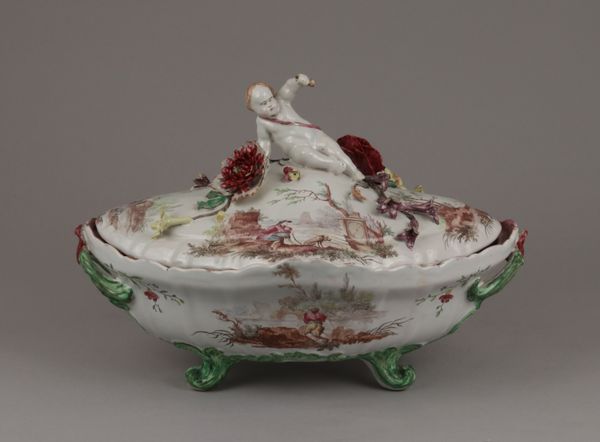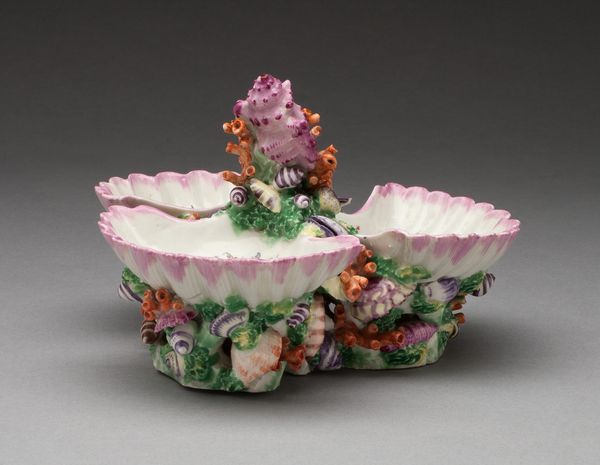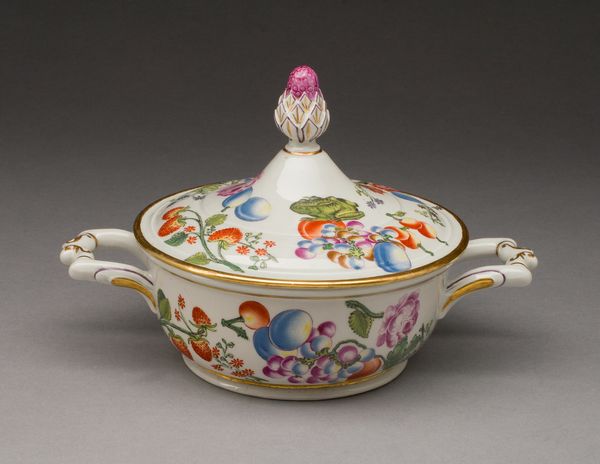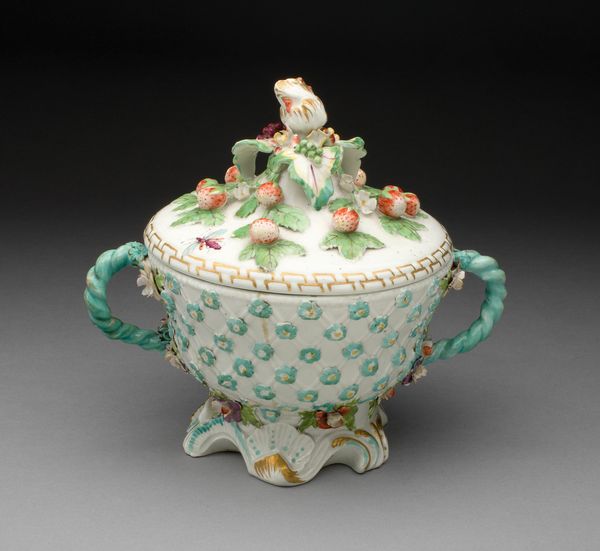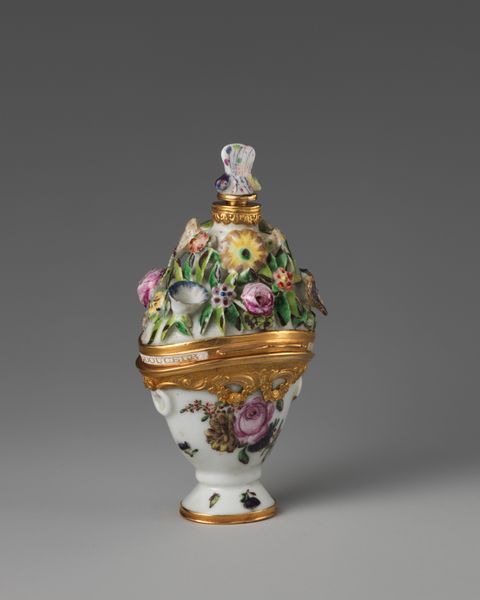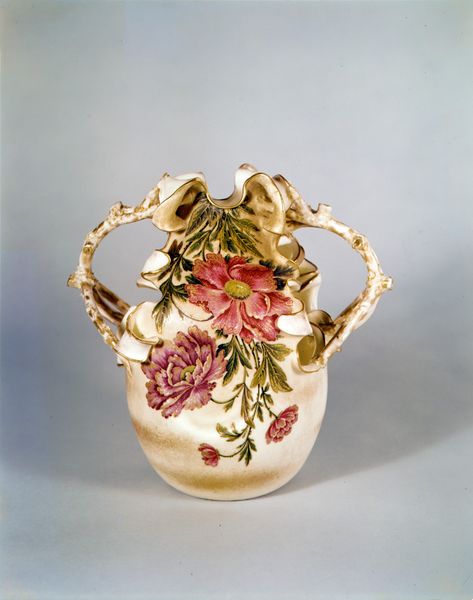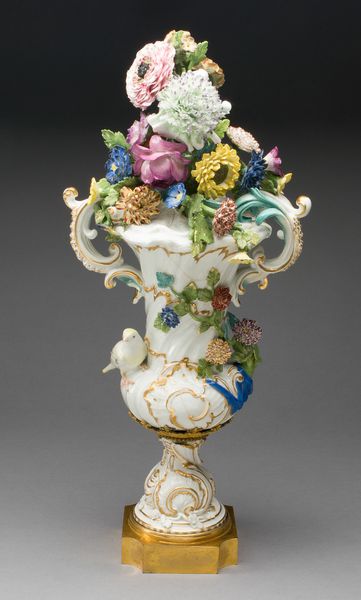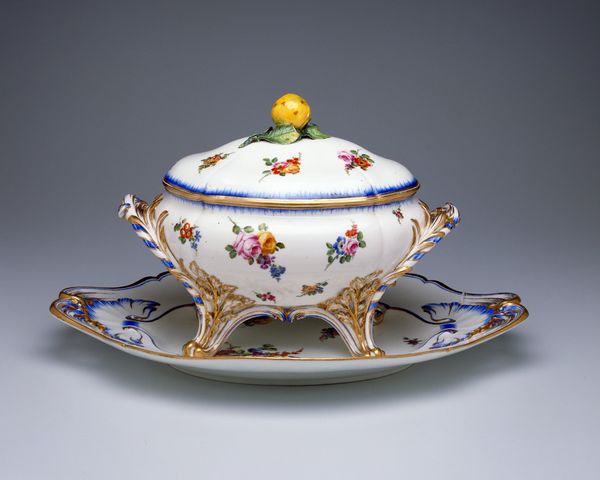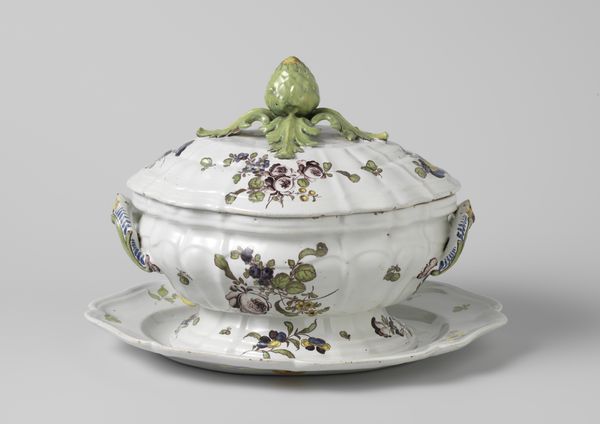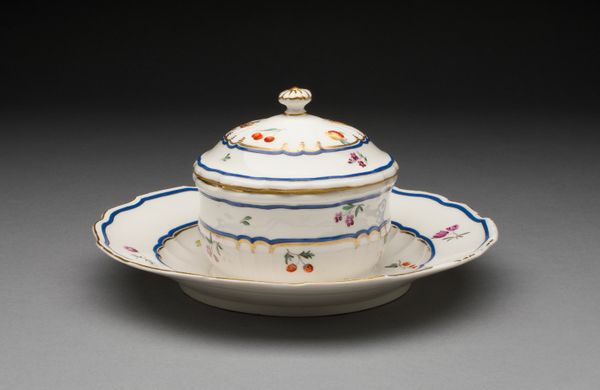
ceramic, sculpture
#
ceramic
#
sculpture
#
ceramic
#
decorative-art
#
rococo
Dimensions: Overall (sugar bowl .68a, b): 6 × 6 7/8 in. (15.2 × 17.5 cm); Overall (tray .69): 10 × 7 in. (25.4 × 17.8 cm)
Copyright: Public Domain
Curator: A whimsical vision in ceramic: we're looking at a sugar bowl and its tray, crafted at the Veuve Perrin Factory between 1755 and 1765. Editor: It’s surprisingly vibrant, that daffodil-yellow glaze almost pulsates. The floral decorations, though delicate, add to the overall feeling of ebullient energy, like spring unleashed. Curator: The floral motifs, carefully painted across both pieces, speak to a very particular cultural moment—a Rococo love of the natural world filtered through the lens of luxury. Each flower acts as a signifier, wouldn't you say, reminding us of themes like beauty, fragility, and perhaps even hidden meanings relating to courtship and social exchange at that time? Editor: Indeed. It’s an exquisite exercise in asymmetry. Notice how the molded shapes of both bowl and tray twist and curl, playing with shadow and light? And then there are those small feet on which the bowl sits, each slightly different, and lifting the mass of it off the even, continuous surface of the tray… Curator: Absolutely! Consider how such intricate detailing reinforces the status of sugar during this period—not merely a commodity, but a precious symbol of wealth and status. Owning something as decorative as this was, of course, a privilege for only the most elite consumers of that time. It almost serves as a stage, highlighting the contents, or, what they represent. Editor: And technically, achieving this level of detail in ceramic is impressive. The glaze is smooth and consistent, while the painted details retain a remarkable level of clarity and intricacy of surface. The forms look soft, malleable even, and the decoration is so precisely realized that it heightens the impression of luxury you describe. Curator: I find myself pondering who actually owned this piece, and what gatherings or rituals were associated with its use. Did the visual language and the symbolism within its very surfaces reinforce ideas and beliefs? It’s amazing what one can evoke just looking at an object from a bygone era. Editor: Precisely. From my perspective, engaging with its artifice allows me to imagine both the skills that underpinned its creation and to speculate on its presence within such an environment. That’s where it comes alive, somehow…
Comments
No comments
Be the first to comment and join the conversation on the ultimate creative platform.
